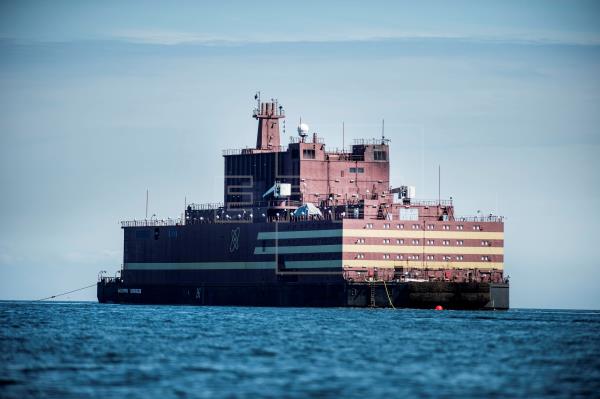Moscow: Russia has launched the world’s only floating nuclear power plant, built to withstand tsunamis and crashes with icebergs, despite criticism by environmentalists who consider it a time bomb comparable to the Chernobyl nuclear station.
The Akademik Lomonosov set sail Friday from the northern White Sea port of Murmansk and was headed for Pevek in the Chukotka region some 4,700 km away, following an official ceremony, reported.
The floating nuclear power station measuring 472 feet in height and 98 feet abeam, and which is being towed by two icebreakers, will call in at its destination port in three weeks and will begin to generate electricity in December, the Rosenergoatom corporation announced.
The project, begun in 2006 but weighed down for years by the economic crisis, uses the same technology as the old Soviet atomic icebreakers, though it has two small KLT-40S naval propulsion reactors.
With a combined power of 70 megawatts and 50 gigacalories, the plant has the capacity to provide electricity for a city of almost 100,000 inhabitants.
Once it docks at Pevek, not far from the Bering Strait, it will be the northernmost nuclear plant on the planet, which has alarmed Greenpeace and other organizations like Norway’s Bellona, which consider it a danger to the fragile Arctic region.
Greenpeace, which has not hesitated to call the power plant a ‘floating Chernobyl’, and other environmentalists, who have dubbed it the ‘Titanic on ice’, have proposed alternatives, such as hydroelectric, solar and wind power, to replace a project they consider too costly.
Meanwhile, the designers of the Akademik Lomonosov argue that its hull is twice as thick as that of traditional icebreakers, it has a hermetic compartment for storing slightly enriched and already used uranium, and can withstand a tsunami caused by a magnitude 9 earthquake on the Richter scale.
Once it begins operations, the nuclear power plant, which will remain at anchor but attached to port infrastructure on land, will remain active for 40 years.
The US in 1968 had launched Sturgis, the first floating nuclear power plant in history, in the Panama Canal, but scrapped it in 1976 due to the high cost of maintenance.
IANS
